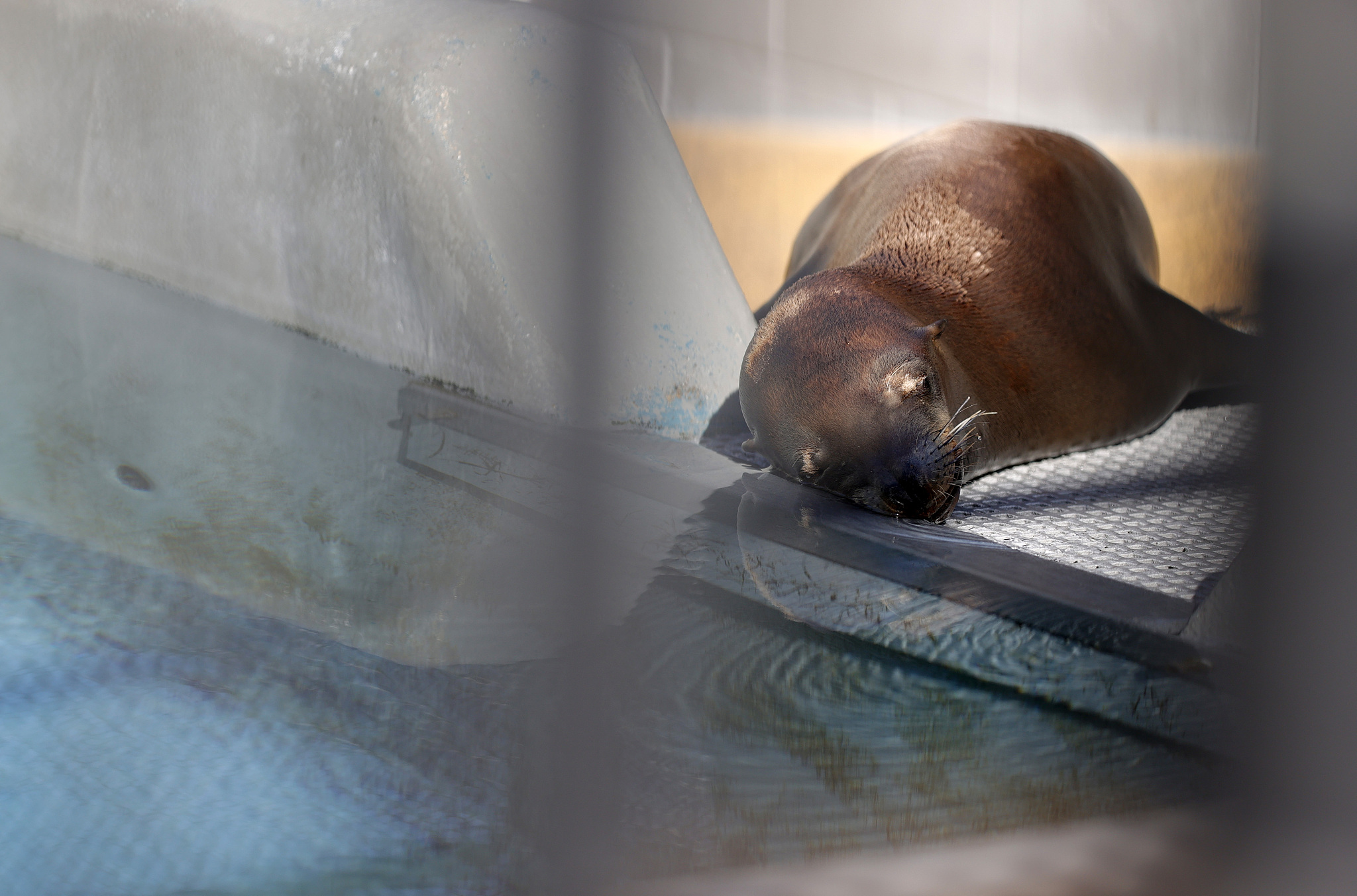
A juvenile sea lion sick with a blood infection known as leptospirosis lays in an enclosure at the Marine Mammal Center in Sausalito, California, May 08, 2021 in /CFP
A juvenile sea lion sick with a blood infection known as leptospirosis lays in an enclosure at the Marine Mammal Center in Sausalito, California, May 08, 2021 in /CFP
Sea lions in California are facing a surge in cancer cases that are potentially linked to thousands of barrels of dichloro-diphenyl-trichloroethane (DDT), a banned insecticide, that were dumped in the Pacific Ocean off the Southern California coast decades ago.
A research vessel from Scripps Institution of Oceanography at the University of California San Diego recently discovered and photographed over 27,000 barrels possibly containing the toxic substance DDT on the seafloor between Santa Catalina Island and the Los Angeles coast.
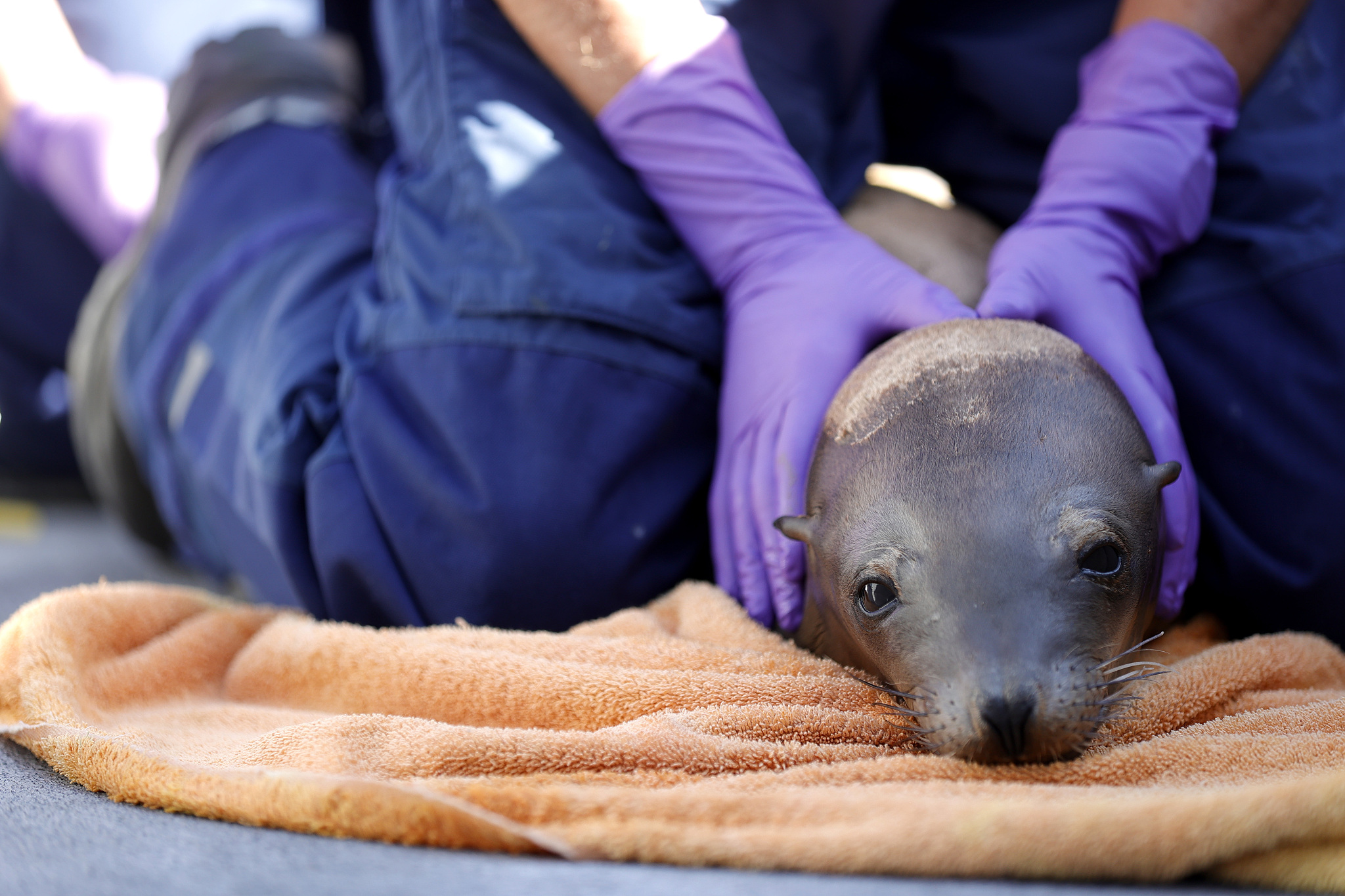
A Marine Mammal Center veterinarian staff takes care of a sick juvenile sea during an examination in Sausalito, California, May 8, 2021. /CFP
A Marine Mammal Center veterinarian staff takes care of a sick juvenile sea during an examination in Sausalito, California, May 8, 2021. /CFP
A recent study conducted by the Marine Mammal Center in Sausalito, California, has found that approximately one in five California adult sea lions have died from cancer developed from a herpes virus in sea lions.
Another study led by the same team showed that pollutants such as Polychlorinated biphenyls (PCBs), man-made industrial chemicals, and DDT play a significant role as co-factors in the development of this cancer. This is particularly relevant to Southern California, where most of the sea lion population gathers each year to breed.
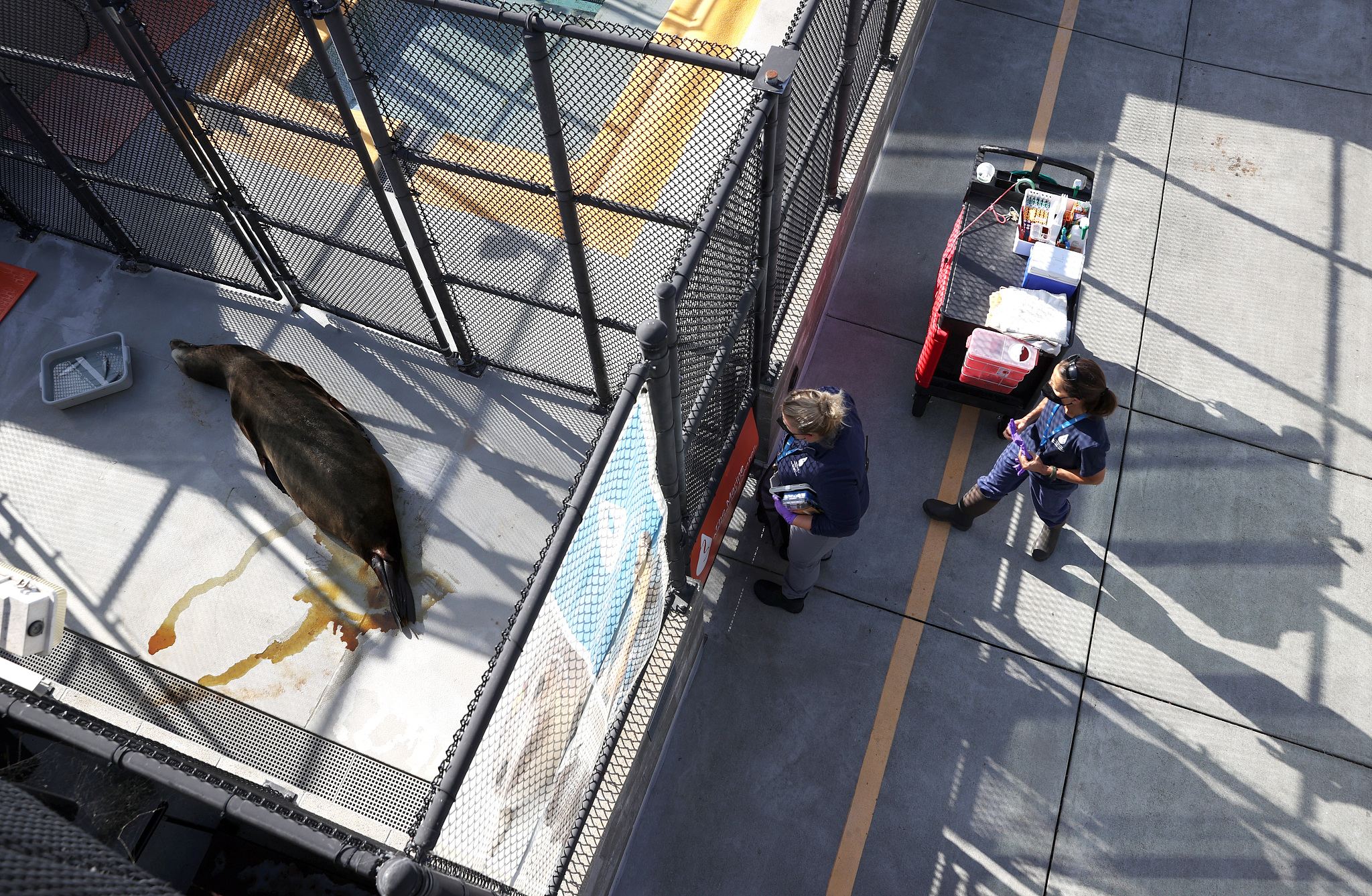
Veterinarian staff examine a sea lion cancer sufferer that was euthanized at the Marine Mammal Center in Sausalito, California, May 8, 2021. /CFP
Veterinarian staff examine a sea lion cancer sufferer that was euthanized at the Marine Mammal Center in Sausalito, California, May 8, 2021. /CFP
Marine mammals nurse their young and live relatively long lives, like humans. They accumulate toxins in their blubber and are sickened by the same kinds of viruses that affect humans.
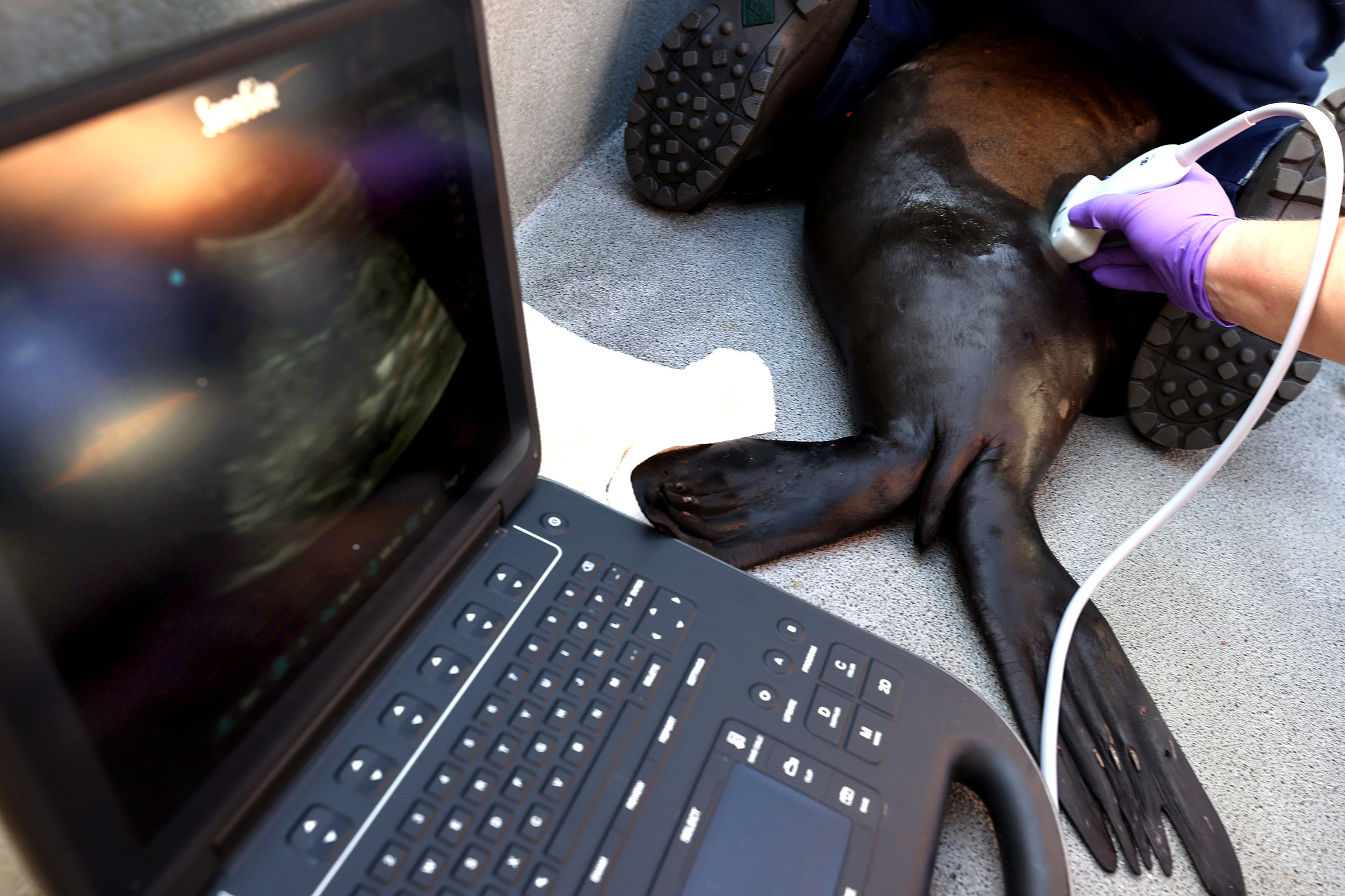
Intern veterinarian Michelle Rivard performs an ultrasound on a sick juvenile sea lion at the Marine Mammal Center in Sausalito, California, May 08, 2021. /CFP
Intern veterinarian Michelle Rivard performs an ultrasound on a sick juvenile sea lion at the Marine Mammal Center in Sausalito, California, May 08, 2021. /CFP
"It is extraordinary, the level of pollutants in these animals in California. It is a big factor in why we're seeing this level of cancer," said Padraig Duignan, chief pathologist at the Marine Mammal Center and a co-author of the study.
"With all the dumping since the Second World War, right up to the 1970s, that's a lot of stuff out there," Duignan said. "These legacy chemicals haven't broken down anything appreciable in intervening years, and nobody knows if they ever will. This is something that they're going to have to be exposed to for who knows how long."
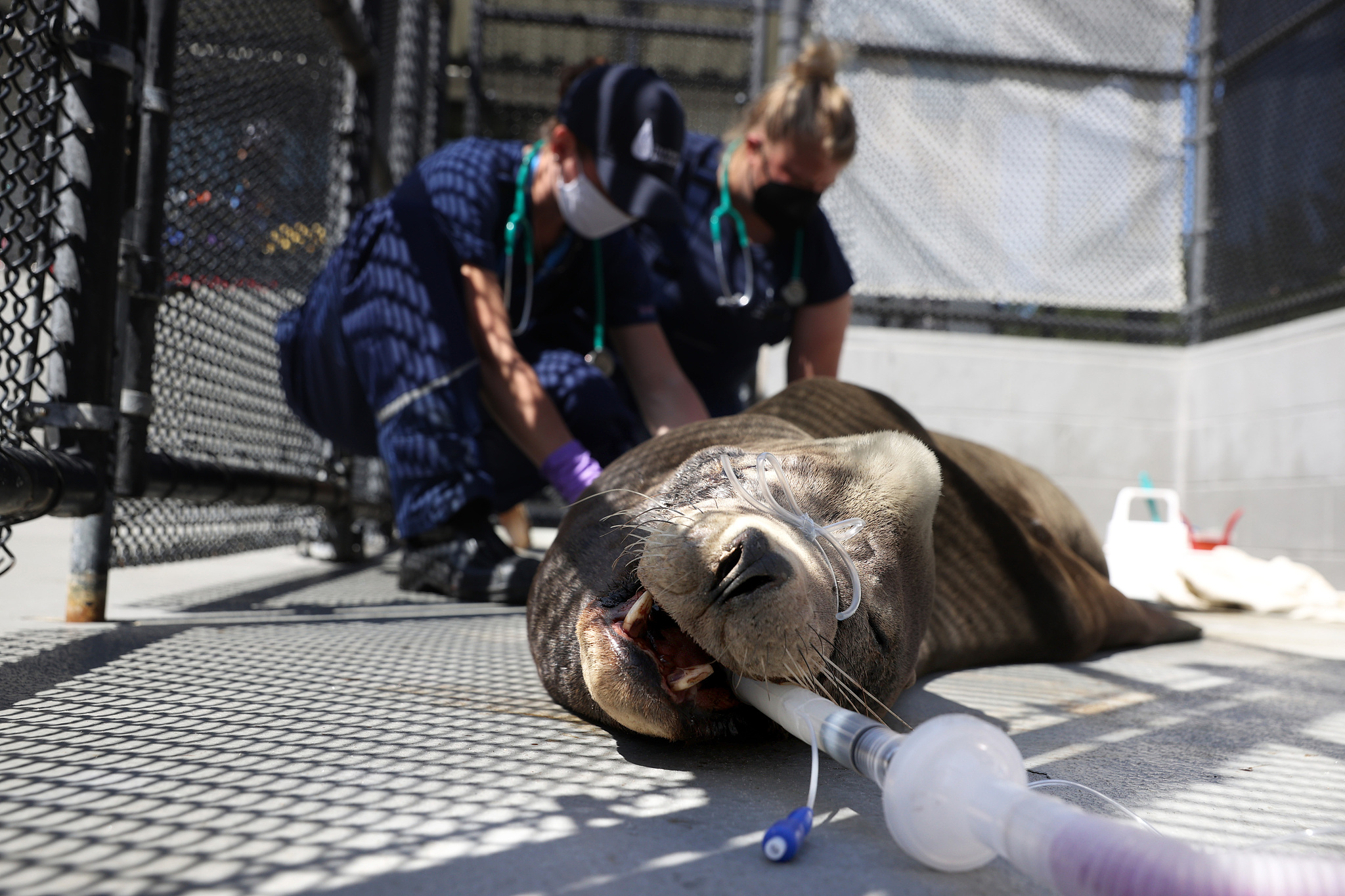
Intern veterinarian Michelle Rivard (R) and resident veterinarian Megan Cabot (L) perform an ultrasound on a sea lion that was euthanized at The Marine Mammal Center in Sausalito, California after veterinarians found signs of cancer, May 8, 2021. /CFP
Intern veterinarian Michelle Rivard (R) and resident veterinarian Megan Cabot (L) perform an ultrasound on a sea lion that was euthanized at The Marine Mammal Center in Sausalito, California after veterinarians found signs of cancer, May 8, 2021. /CFP
The Marine Mammal Center is the world's largest marine mammal hospital. Since cancer in sea lions was first discovered in 1979, researchers have found that between 18-23 percent of adult sea lions admitted to the Center's hospital have died of the fatal disease.
(With input from AP. All photos via CFP.)
(If you want to contribute and have specific expertise, please contact us at nature@cgtn.com.)

